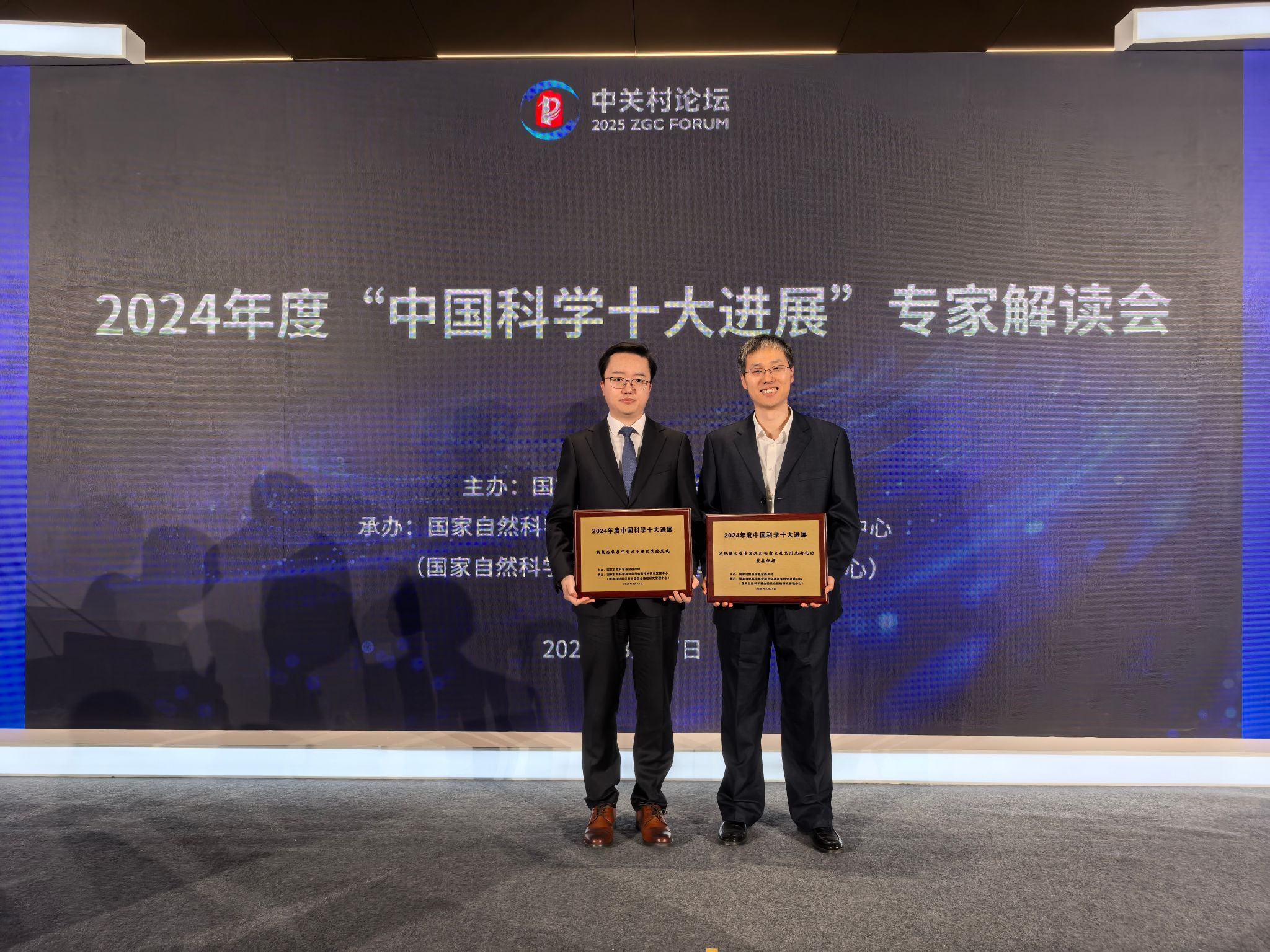On March 27, the National Natural Science Foundation of China released the country's top 10 scientific advances of 2024 during the opening ceremony of the 2025 Zhongguancun Forum (ZGC Forum) Annual Conference in Beijing on Thursday. The advances were mainly achieved in the fields of mathematics, physics, astronomy, information science, chemistry, materials science, energy, earth and environmental science, and life and medical science. This year's top 10 advancements were chosen from over 700 groundbreaking basic research achievements.
Two research by NJU scholars Du Lingjie and Wang Tao were selected in the top 10 scientific advances, making NJU the leading university on this list.

Experimental discovery of graviton modes in condensed matter
Based on the principle of wave-particle duality, gravitons are viewed as hypothetical spin-2 particles corresponding to gravitational waves, serving as a critical bridge between general relativity and quantum mechanics. Theoretically, it was predicted that graviton-like particles may emerge in the fractional quantum Hall effect — these condensed-matter quasiparticles are spin-2 low-energy mode excitations (thus termed graviton modes or graviton excitations), which had remained experimentally elusive. A research team led by DU Lingjie from Nanjing University designed and assembled a resonant inelastic polarized light scattering system with ultra-low temperatures and high magnetic fields. In the fractional quantum Hall effect, they successfully observed graviton modes, utilizing GaAs quantum wells. This experimental discovery of the graviton-like particles reveals, from a two-dimensional perspective, that quanta of metric fluctuations are spin-2 low-energy excitations. It provides a new approach to explore quantum gravity physics in condensed matter systems and enhances the understanding of graviton-related quantum principles. This achievement validates a novel geometric description of the fractional quantum Hall effect and is expected to drive progress in probing the microscopic structure of semiconductor electronic systems and in the development of topological quantum computing.

Discovery of key evidence that supermassive black holes influence the formation and evolution of host galaxies
Galaxies are the fundamental building blocks of the Universe, and the study of the triggering and cessation of star formation within galaxies is one of the central tasks of extragalactic astronomy. Theoretical studies suggest that the energy released during the growth of supermassive black holes (SMBHs) at galactic centres plays a key role in driving the transition of galaxies from "active" (star-forming) to "quiescent" states. However, this hypothesis has long lacked robust observational support.
A groundbreaking study led by Tao Wang and colleagues at Nanjing University has shown that the mass of a galaxy's central SMBH is the most important factor in regulating its cold gas content: galaxies hosting more massive SMBHs have significantly less cold gas. This finding shows that SMBHs control galactic evolution primarily by regulating the cold gas reservoir - the raw material for star formation. The research explains why quiescent galaxies tend to host more massive central black holes than their star-forming counterparts, and represents a major step forward in unravelling the mystery of how galaxies transition between their "live" (star-forming) and "death" (quiescent) phases.

